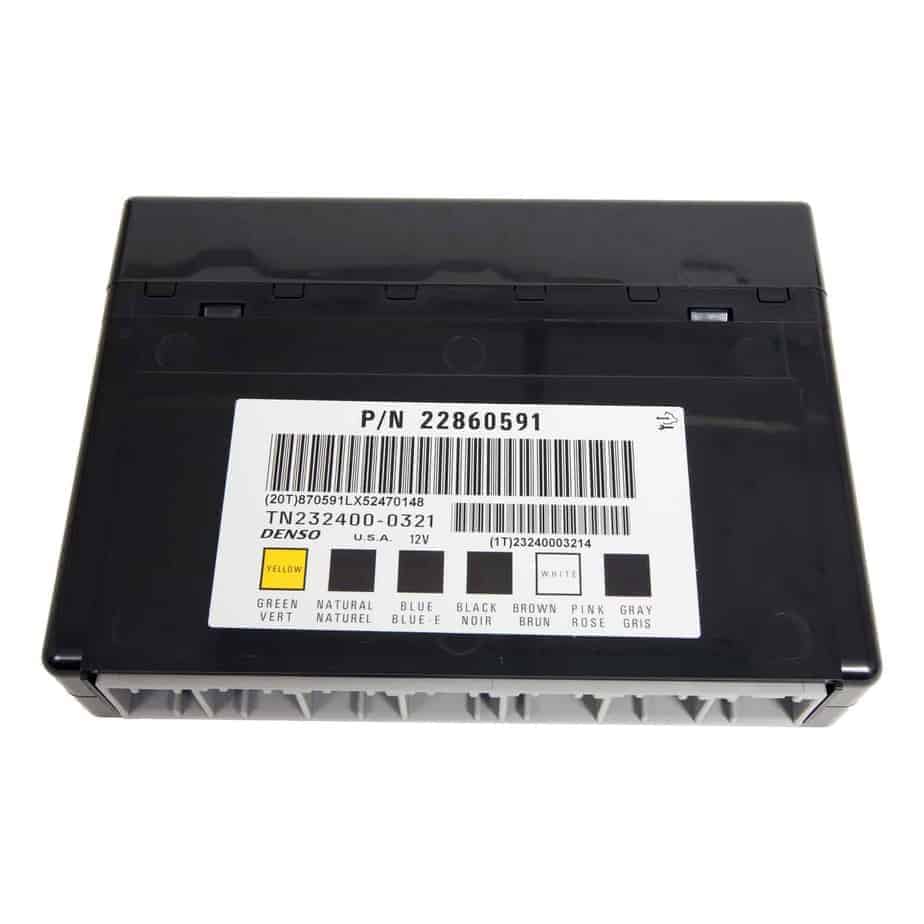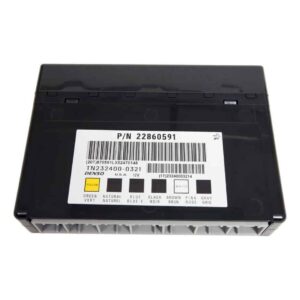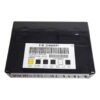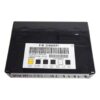Tired of Chasing Electrical Gremlins? Your Solution is Here.
As a technician with over two decades of experience, I’ve seen it all. A customer comes in with a vehicle that seems possessed—the dome light flickers, the power windows have a mind of their own, and the security light won’t turn off. They’ve replaced the battery, checked fuses, and are at their wit’s end. In my shop, I’ve diagnosed hundreds of these cases, and a faulty Body Control Module (BCM) is often the culprit. It’s the central command for your vehicle’s comfort and convenience features, and when it fails, chaos ensues.
This isn’t just a replacement part; it’s a direct, hassle-free resolution. We take the guesswork and the expensive dealership trip out of the equation. By providing your Vehicle Identification Number (VIN) at checkout, you receive a GM Body Control Module that is professionally flashed with the latest GM software specific to your vehicle. This means it arrives at your door ready for installation, designed to restore the functions you rely on every day.
A Technician’s Notebook: The Case of the Confused Tahoe
I remember a 2010 Chevy Tahoe that came into the bay with a laundry list of bizarre symptoms. The radio would randomly shut off, the door locks would cycle while driving, and the dash lights would dim and brighten for no reason. The owner had already spent a small fortune at another shop that couldn’t pinpoint the issue. A quick scan showed a slew of communication errors (U-codes) pointing to a network problem. Instead of just replacing parts, we traced the communication lines back to their hub: the BCM. A failing processor inside the original module was flooding the vehicle’s network with bad data, causing system-wide confusion. Installing a VIN-programmed GM Body Control Module didn’t just fix one problem—it fixed all of them at once. It was a textbook example of how a single component can be the root of multiple, seemingly unrelated issues.
Common Signs of a Failing GM BCM
If your vehicle is exhibiting any of these symptoms, a failing BCM is a likely cause. This module is your definitive fix.
- ✔ Erratic power window or door lock operation.
- ✔ Interior or exterior lights not working correctly (staying on or not turning on).
- ✔ Horn sounding unexpectedly or not working at all.
- ✔ Vehicle security system faults or anti-theft light staying illuminated.
- ✔ Intermittent no-start conditions where the starter doesn’t engage.
- ✔ Diagnostic Trouble Codes (DTCs) related to communication, such as U0140, U0155, or other U-codes.
- ✔ Wipers activating on their own or not responding to the switch.
A Straightforward Guide to BCM Installation
Replacing your BCM is a manageable job for a DIYer with basic tools. While locations vary slightly, this general guide will help you through it.
- Safety First: Always disconnect the negative terminal from your vehicle’s battery and wait a few minutes to ensure all systems are powered down.
- Locate the BCM: On most of these GM vehicles, the BCM is located under the driver’s side of the dashboard, often to the left of the steering column or in the center dash area. You may need to remove a lower dash panel for access.
- Disconnect and Remove: Carefully unplug the electrical connectors. They have locking tabs that need to be depressed. Once disconnected, unbolt or unclip the old module from its mounting bracket.
- Install the New Module: Mount your new, pre-programmed BCM in the same location and securely plug in all the electrical connectors. You’ll hear a click as they lock into place.
- Reconnect and Test: Reconnect the negative battery terminal. Turn the key to the ‘On’ position and test all body functions—windows, locks, lights, wipers, etc.
- Perform Relearns (If Needed): As noted in our post-install section, some vehicles may require a Brake Pedal Position relearn or an Airbag System sync using a compatible scan tool if warning lights appear.
Verified Vehicle Compatibility List
This module is a direct replacement for a wide range of GM vehicles and part numbers. Please confirm your vehicle is on this list. This unit replaces part numbers including: 10382479, 15093910, 15276271, 15828601, 15921352, 20815898, 22860591, 25892622, and many more.
EXPRESS/SAVANA VANS 08-12 (center dash)
IMPALA 06-13 (LH dash)
ACADIA 07-12 (LH dash)
MONTE CARLO 06-07 (LH steering column)
TAHOE/YUKON/SUBURBAN/AVALANCHE 10 (under steering column)
TRAVERSE 09-12 (LH dash)
CAPTIVA SPORT 12 (center dash)
DTS 06-11 (RH center dash)
OUTLOOK 07-10 (center dash)
ESCALADE / ESV / EXT 10 (under steering column)
STS 10 (center dash)
TORRENT 07-09 (center dash)
CTS 08-13 (LH/RH dash)
G8 08-09 (center dash)
LUCERNE 06-11 (right side dash)
SRX 07-09 (LH dash)
HUMMER H2 08-09 (LH firewall)
VUE 08-10 (center dash)
CAPRICE 11-13
ENCLAVE 08-12 (LH dash)
Frequently Asked Questions
Why do you need my VIN number?
Your VIN is essential because it allows us to program the Body Control Module with the exact software and vehicle-specific options from GM. This ensures it communicates correctly with your other modules, making the installation process as close to plug-and-play as possible.
Do I need to return my old BCM?
No. There is no core charge for this part. You can keep your original module, which saves you the time and expense of shipping a core back.
What are the ‘post-install procedures’ I might need to do?
In some cases, after installing the new BCM, your vehicle may require a ‘Brake Pedal Position Relearn’ or an ‘Airbag System Sync’. These are simple procedures for a shop with a professional diagnostic tool and are only necessary if specific warning lights appear after installation.
Is this a difficult part for a DIYer to install?
For someone with basic mechanical skills, this is a very manageable job. The main challenge is typically accessing the module under the dashboard. Since our module comes pre-programmed, you eliminate the most difficult step: the software flashing.
Will this fix my ‘Service Theft System’ message?
A faulty BCM is a very common cause of issues with the vehicle’s anti-theft system. While not a guarantee for every situation, replacing a bad BCM often resolves these security-related warnings and no-start problems.



